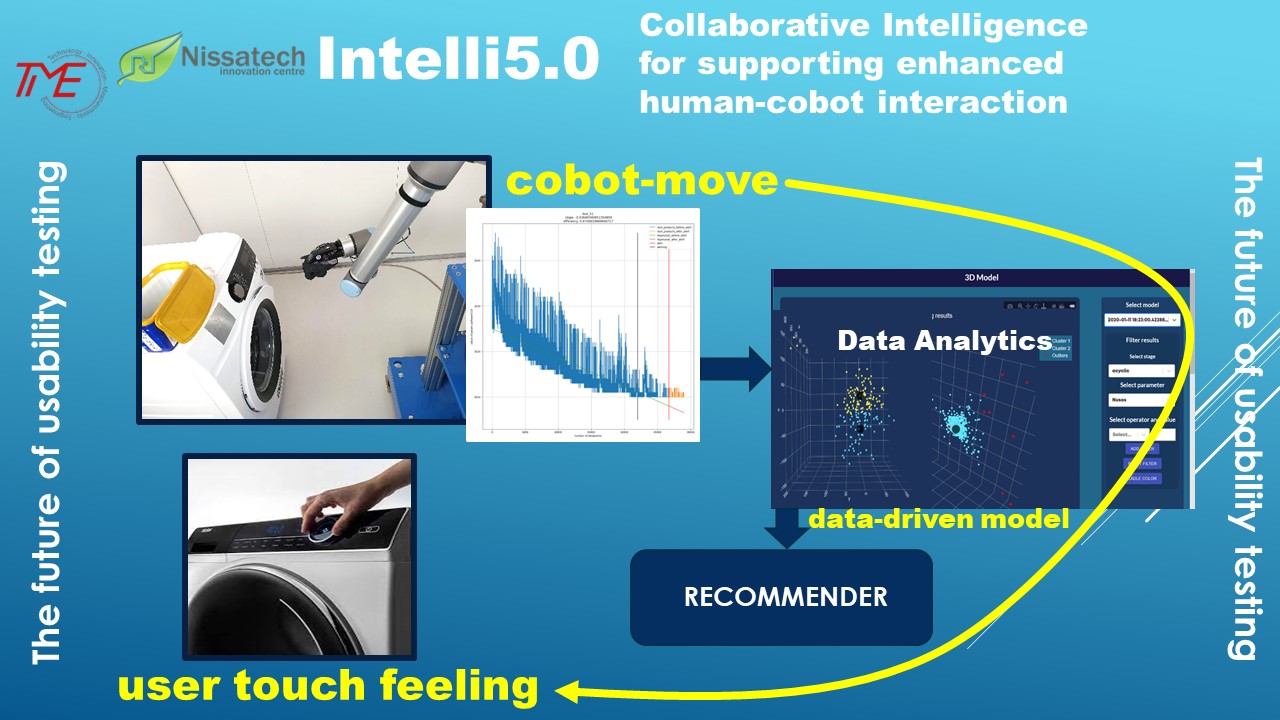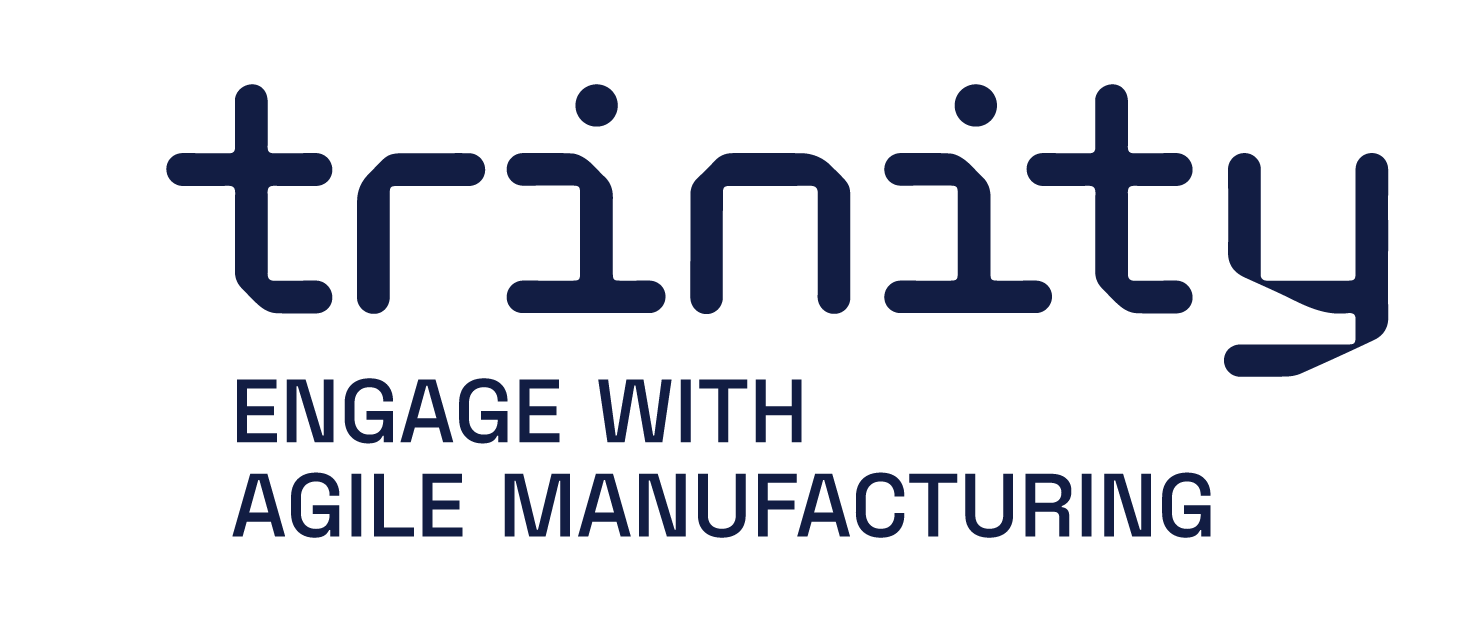Intelli5.0: Toward Industry 5.0: Collaborative Intelligence for supporting enhanced human-cobot interaction in agile production, demonstrated through the creation of innovative in-process quality inspection services
Name of demonstration
Intelli5.0: Toward Industry 5.0: Collaborative Intelligence for supporting enhanced human-cobot interaction in agile production, demonstrated through the creation of innovative in-process quality inspection services
Main objective
The main goal is to design and develop a new technology for realizing Collaborative Intelligence between the cobot and human operator, based on a novel combination of Human Cognition and Artificial Intelligence, inspired by the way how human react on the unusual variation in external world (cognitive perception). The technology leverages the existing work of partners: existing cobot-based product testing by TIME and cognition-driven manufacturing by Nissatech.
Short description
Briefly, our approach detects the moment of changes in the physical parameters (force, angle, vibration) which are inducing a change in the human judgement (comfortable / not comfortable, high quality / lowe quality – i.e. human psychological perception). Since the cobot use case is related to the functional testing of household appliances we should even argue that we have developed a new approach for testing a subjective perception of the quality (based on the psychology of customers) – this seems to be very novel and interesting for our own advertisement (analytics for special cases). It is important that, based on literature, it is required to perform this “subjective / touch feeling based” test in which 50% of tested customers are confirming to “notice” difference in feeling after N usage cycles
Moreover, this method can be used for calculating the “subjective” (human touch feeling) quality of a device, like quality1 or quality2, classifying each particular device in one of these quality categories (influencing the price)
This demonstration has received funding from the European Union’s Horizon 2020 research and innovation programme under grant agreement No 825196.
Owner of the demonstrator
Nissatech
Responsible person
dr. Nenad Stojanovic
Nenad.Stojanovic@nissatech.com
NACE
J63 - Information service activities
Keywords
cobot assisted manufacturing, data analytics, usability testing.
Benefits for the users
Main exploitable results are:
1) Collaborative Intelligence 5.0 as a concept for cobot-based in-process qualiy control,
2) Cognitive perception as a software module for collecting and analysing data collected from the cobot,
3) Human-cobot interaction as a service for detecting the minimal variation in the cobot operation which will impact/change the user touch-feeling
Main exploitation is related to offering a new service for cobot-based and cognition-driven usability testing based on all three exploitable results. It will be realized as a joint exploitation. Main market: home appilances.
Additionally, exploitable results 1) and 2) will be used for offering a data analytics service, based on cognition, for analysing process behaviour in the cobot-driven automation (not only functional and usability testing). Main market: cobot-based quality (in process) control
Innovation
There are two main issues here, which are not covered properly by the traditional cobot-based device testing and are focus of our solution:
– What is the (minimal) degradation level which indicates that the device cannot be used from the technical point of view (e.g. that the door cannot be closed completely)
– What is the (minimal) degradation level which indicates that a PERSON doesn’t feel comfortable in using the device (e.g. that the door cannot be closed smoothly, from a user point of view)
Especially important is the second issue, since it reflects the aspects of the user/human “touch feeling” when using a device. The assumption is that the user will not prefer a device which, after a period of usage, will be more difficult for the operation (e.g. more force to be used for opening the door).
Risks and limitations
R1: Data obtained from the sensor is not of the desired quality for the ML process
Technology readiness level
5
Sectors of application
cobot-based functional and usability testing.
Potential sectors of application
tool wear detection
Hardware / Software
Hardware:
Cobot UR 10 E, External Load Cell,
National Instruments cDAQ acquisition system
Software:
Labview software developed for specific purpose
D2Lab (data analytics)
Photos

Documents
TRINITY-final-report-Intelli5.0A-1.pdfNo modules assigned
Trainings
To learn more about the solution, click on the link below to access the training on the Moodle platform
Toward Industry 5.0: Collaborative Intelligence for supporting enhanced human-cobot interaction in agile production, demonstrated through the creation of innovative in-process quality inspection services
